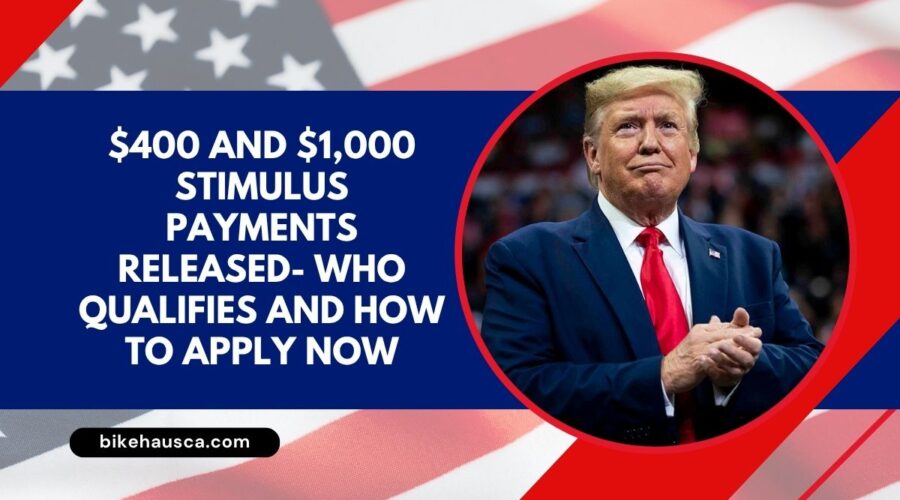$400 and $1,000 Stimulus Payments Released- Who Qualifies and How to Apply Now
Across the United States, several states and counties have introduced guaranteed income initiatives—commonly known as stimulus checks—to support vulnerable individuals and families.
These programs are designed to offer unconditional financial aid to those in need, such as low-income households, former foster youth, and people affected by economic hardship.
From Los Angeles’ Breathe initiative to Mississippi’s Magnolia Mother’s Trust and New York’s Inflation Relief Plan, these programs strive to ease poverty and financial insecurity by issuing regular cash payments without imposing usage limitations or strict eligibility barriers.
Los Angeles County’s Breathe Program: $1,000 Monthly Payments
Launched in 2022, Los Angeles County’s Breathe program delivers guaranteed monthly income to residents whose financial conditions were negatively impacted by the COVID-19 pandemic.
Initially, 1,198 individuals were randomly chosen to receive $1,000 each month for a span of three years, continuing through August 2025.
To qualify, applicants must:
- Be 18 years or older
- Live in designated low-income areas within the county
- Demonstrate economic hardship resulting from the pandemic
In August 2024, the program expanded to accommodate former foster youth aged 18 to 21. This extension includes 2,000 recipients, each receiving $500 monthly or $1,500 quarterly for 18 months.
Mississippi’s Magnolia Mother’s Trust: Supporting Mothers Since 2018
The Magnolia Mother’s Trust, operating in Jackson, Mississippi, is the longest-running guaranteed income program in the nation, starting in 2018.
It focuses on assisting Black mothers with limited incomes and aims to empower them with unrestricted financial resources.
Currently in its fifth cohort, the program provides:
- $1,000 per month for 12 months
- An additional $1,000 deposit into each child’s 529 college savings account
- Optional access to mental health and family wellness services
Notably, participants are not required to undergo drug screenings or verify employment status. Research linked to the program indicates a positive impact on financial security and overall well-being.
New York’s 2025 Inflation Relief: Up to $400 Per Household
Governor Kathy Hochul has introduced a statewide Inflation Relief program for New York residents as part of the 2026 state budget. The objective is to cushion families from the growing cost of living.
Key features include:
- Up to $400 in relief payments per household
- Estimated to reach 8 million families
- Automatic distribution of checks between October and November 2025
- Must be a New York resident and have filed a state tax return
This initiative also increases the Child Tax Credit to $1,000 per child and guarantees free school meals for all, delivering broader economic relief to families.
Comparison of the Three Guaranteed Income Programs
Each of these programs has its own structure, eligibility criteria, and target demographics, but all are unified by a core mission: offering financial support without employment or educational stipulations.
| Program Name | Location | Payment Amount | Duration | Target Group |
|---|---|---|---|---|
| Breathe | Los Angeles, CA | $1,000 monthly | 3 years (until Aug 2025) | Low-income residents, former foster youth |
| Magnolia Mother’s Trust | Jackson, MS | $1,000 monthly | 12 months | Black mothers with low income |
| Inflation Relief | New York State | Up to $400 one-time | Oct–Nov 2025 | Low/middle-income households |
Guaranteed income programs like Breathe, the Magnolia Mother’s Trust, and New York’s Inflation Relief payments are playing a pivotal role in enhancing financial security across different communities.
By removing traditional barriers and offering flexible cash support, these initiatives are reshaping how we address poverty and economic inequality in the U.S.
FAQs
Do guaranteed income programs require recipients to work or attend school?
No, none of the featured programs—Breathe, Magnolia Mother’s Trust, or New York’s Inflation Relief—require employment or education as a condition for receiving payments.
How can someone apply for these programs?
Application procedures vary. For example, Breathe used random selection for its participants, while others, like New York’s Inflation Relief, are based on automatic eligibility through tax filings.
Are these payments taxable?
Generally, guaranteed income payments may or may not be taxable depending on the program structure and federal/state tax regulations. Recipients are advised to consult a tax advisor.


Leave a Reply